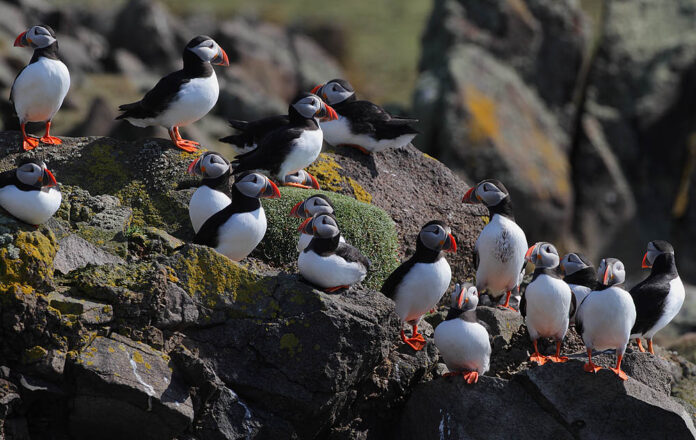
BY HARRY WEEKES
Many years ago, in an Introduction to Ecology class, our college professor, Sallie Sheldon, stalked back and forth across the front of the room telling us all about population growth curves, different kinds of interspecific relationships, and the intricacies of island biogeography. At some point during the lecture, some kind of heating fan or vent either came on or went off at one side of the building. It was a forcible groaning of air. Sallie shot to the opposite side of the room, ending up in a quasi-crouch, hidden behind a lab table with her hands splayed and her eyes wide.
She recovered quickly, then explained her behavior, still a little out of breath. “That sounded exactly like a polar bear waking up from anesthesia.”
“Now, where was I?”
Ummm, “What?”
We engage the natural world through our senses. While we use all our senses almost all of the time, there are obvious primary ones associated with different encounters. You might smell a skunk long before seeing it. The taste of fruit helps discriminate how ripe it is. A polar bear is something you immediately recognize by and associate with sight—it’s the bear, the big white one.
A magical expansion happens when the other senses are pulled in. A more holistic awareness develops when you are paying attention to a bear’s color and the sounds of its breathing. Or how vividly red a ripe strawberry is. Or when the checkered design of a snake suddenly couples with explosive rattling. Input from multiple sensory channels amplifies experience.
I recently had such an amplification in Borgarfjörður eystri in northeastern Iceland.
My daughter Penelope graduated from college in May. On the final leg of a post-graduation trip, she asked if I would join her on this island nation to the north—a place that has always looked like a kind of plump, cartoon reindeer to me. The answer: yes.
Unsurprisingly, part of my itinerary research asked Google “Best birding spots in Iceland.” This is how we ended up on the stairs and boardwalks of Hafnarhólmi, a North Atlantic puffin colony in Iceland’s eastern fjords.
You go to see puffins for an almost comical cuteness. And they deliver. Their plump little selves; their sporty tuxedoes; their dramatic orange, yellow, and gray bills, with matching tangerine feet; their mouths impossibly, and quintessentially, full of sand eels and capelin.
People go to Hafnarhólmi because this is a place you get to walk within the colony, where you see nature’s little Hobbits cruise in from the sea to land on tussocks of grass and earth where they dig their well-kept holes, and into which they disappear.
You’re close enough to watch the waddling. Close enough to appreciate the vivid colors. And close enough to hear their distinctive breeding conversation. Described as low growling, puffins enter their nesting burrows, and soon enough you hear a fabulous low-pitched humming—a seabird greeting between paired couples.
Quite the opposite of Sallie’s startle response, the talk of puffins makes everyone go still, open their mouths a little bit, and stand quietly, at once acknowledging and drinking in these muffled little motorboat discussions.
So there, standing on the edge of the Norwegian Sea at just a little higher than 65 degrees North Latitude, with clouds and mist covering and clinging to vast, glacially carved headlands, in the midst of intermittent, and almost necessary, rains, air filled with the smell of the ocean, and distant, crashing waves, hundreds of puffins taxied in and out, impossibly black and white and orange.
And that is where I heard them purr.
Harry Weekes is the founder and head of school at The Sage School in Hailey. This is his 54th year in the Wood River Valley, where he lives with Hilary and their two mini-Dachshunds. The baby members of their flock have now become adults; Georgia and Simon are fledging in North Carolina, and Penelope has recently changed roosting sites to Connecticut.


